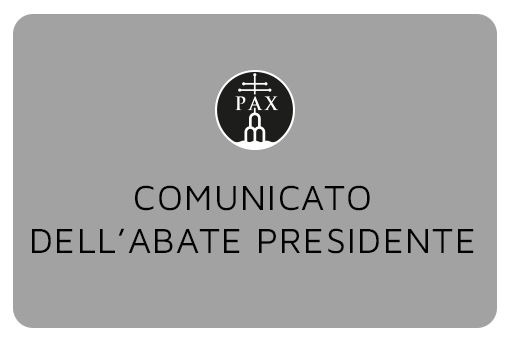Nexus Newsletter- July 2025
- Isabelle DESARNAUD
- Jul 20, 2025
- 4 min read
This edition of NEXUS should reach you on 11 July, the day when we celebrate St Benedict. Among us Benedictines, this day is celebrated in different ways: straightforward as our Holy Father’s feastday, or as the day when the translation of his relics from Montecassino to Fleury is commemorated, or – here in Europe – as his feastday as principal patron of Europe. I will be spending this day in Worth Abbey in England where I have been invited for a big feast of the community, and also as a keynote speaker for “Benedict Week”, an event promoted by the Lay Community of St Benedict who are great promotors of Benedictine values and spirituality in Britain.
Two days ago, an EWTN reporter interviewed me about the medal of St Benedict. For most of us, the medal is not exactly the most important element of our heritage, but it has broad appeal and millions of faithful wear it as a sign of protection. The timeless design, created for the 1880 jubilee, explains part of this popularity. The “mysterious” sequence of letters – CSSMDNDSMDVRSSMQLIVB – add to the fascination, I believe. It is a riddle and hints at something larger. And once the riddle is understood, the archaic text – with dragons and poison, no less – conjures a rich imagery and takes us back into a world that savours of adventure, peril and salvation. The colourful prayer was formulated in the late middle ages, possibly at the abbey of Metten, but it has no direct connection with St Benedict himself. That does not matter – a great tradition can generously incorporate different strands. And as far as Benedictine internet searches go, the medal is bringing lots of seekers to our Benedictine websites.
A few days ago I came back from a long trip through Italy, France and Switzerland. Under the working title of “Tour de France”, Fr Patrick and I visited 13 communities as well as the birthplace of St Anselm, in Aosta. The main goal was to visit those monasteries directly under the abbot primate. I have now been to five of them, only Weston Priory in the U.S. is still on my list. Like all of my predecessors, I am trying to slowly reduce their number by helping those communities to join congregations. This is not just about making my work easier. I genuinely believe that in these trying times a congregation can offer a degree of superivison, assistance and solidarity which the abbot primate cannot provide.
Another focus of my journey were monasteries which have adopted the older usage for their liturgy, i.e. what Pope Benedict XVI referred to as the extraordinary form. There are around ten such monasteries in our Confederation, most of them in France. This is a part of our monastic world with which I previously did not have any contact. As it is a duty of the abbot primate to represent our entire Benedictine world, I felt I really had to become familiar with this reality. These were no visitations, however, simply fraternal visits, and sadly – as always - too short. Four things stood out for me: First of all, there was a very warm-hearted and kind hospitality everywhere. Second, my impression was of a very serious monastic observance in all these houses. Thirdly, and – contrary to what some may suspect – I got a strong sense of these houses being in communion with the successor of Peter and also with our wide and varied Benedictine family. Finally, these monasteries appear to be in a phase of stability or even growth: there were novices and juniors in all the houses we visited, and I heard about two planned new foundations. Enlightening for me was also the experience of diversity: Fontgombault and its daughterhouses have elements that are characteristic of the Solemes Congregation, something I could perhaps call “monastic elegance”, while Le Barroux and La Garde exhibit some of the more rugged features typical of the Subiaco-Muard tradition from which they originally stem. I came to know a vibrant part of our Benedictine world.
Let me end this with a personal note. A new coat of arms was not exactly a priority for me, but after nine months or so I got around to commissioning a draught that you will find attached to these notes. On the left side - which the heraldic experts confusingly call the right - you find the older arms of Sant’Anselmo, used since the beginning of our house under Abbot Primate Hildebrand de Hemptinne. They are paired with a star over waves. The star is taken from my motto “Respice Stellam”, which in its turn comes from a sermon of St Bernard about Our Lady, Star of the Seas. He describes her as refuge, consolation and help when great troubles loom. The silvery waves complement this, and also recall my home, Bad Wörishofen in Bavaria, a spa which is well known for its live-giving waters.

In the Northern Hemisphere it is now holiday season. Sant’Anselmo has emptied and a small crew tries to keep the house going over the summer. Not all of our communities practice vacations, but I hope you will all find a few days or moments of recreation and rest until I write to you again this coming fall.
Abbot Primate Jeremias Schröder




Comments